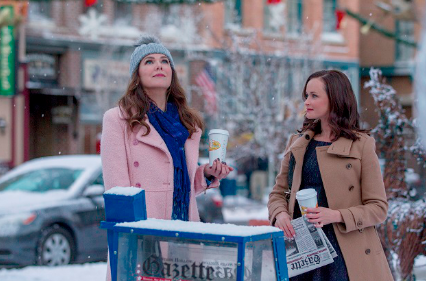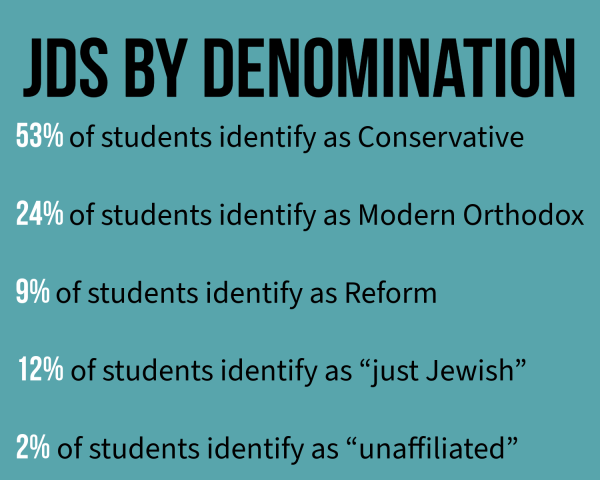TV show review: “Gilmore Girls”

Lorelai and Rory in “Winter,” the first episode of “Gilmore Girls: A Year in the Life.”
Highly promoted and long awaited, the four-episode “Gilmore Girls” revival “Gilmore Girls: A Year in the Life” was released Nov. 25. The show’s original creator, Amy Sherman-Palladino, left “Gilmore Girls” after the sixth out of seven seasons, and wrote the revival partly in order to give the show the ending she wanted, including her long-planned final four words.
The revival, like the original show that ended in 2007, focuses on the lives of Lorelai Gilmore, her daughter Rory, their family and the townspeople in their small Connecticut town of Stars Hollow. The original show began with Lorelei struggling to find a way to pay for Rory’s private school education. Her wealthy parents, to whom she had barely spoken since having Rory when she was 16 years old, agree to lend her money on the condition that she and Rory go to weekly Friday night dinner at her parents’ house. “Gilmore Girls” continued to follow Rory through her high school and college years and her troubles with school, friends, family and relationships, almost always guided by her strong bond with her mother, who raised her alone.
The revival’s opening credits replay famous lines from the original show, which is a sweet way of reintroducing the viewer. Those who enjoyed the small-town, heartwarming feeling of the show will not be disappointed in the revival, which seems to pick up the rhythm of the show like it never ended.
The four episodes each took place during one season of the year, starting in the winter. The episodes seemed to still flow right into each other so that there were not separate time jumps between the individual episodes, a tactic that is helpful to the viewer.
Shortly before the revival was filmed, Edward Herrmann, who played Rory’s grandfather in the show, died. He was a central character in the show, and the revival honored his death beautifully; with flashbacks to his funeral and many family members mourning his loss, it felt as though he was still there. Although “Gilmore Girls” is a comedy, there were very sentimental moments which showed how deeply all of his family members were affected by his character’s death.
Sherman-Palladino said that she never watched the seventh season because it would have been hard for her to watch a show she loved to write continue without her, and this was pretty obvious during the revival. In the sixth season of Gilmore Girls, Rory’s life was a mess, as she drops out of college and has a falling out with her mother, but she finally got most of her life together in the seventh season. In the revival, even though Rory is now 32 years old, she remains in a state of disarray. Certain plot lines, such as Rory carelessly traveling around with her college friends, seemed not only out-of-character and immature for a thirty-year-old, but also exhausted, as they were too similar to storylines from the original show.
There were only four 90-minute episodes in the revival, and too many of the episodes seemed to be wasted on random scenes. Around ten minutes from the third episode “Summer” were dedicated to a guest appearance by Sutton Foster and her leading role in “Stars Hollow: The Musical” — and there are only so many cringe-worthy songs and dances, and Lorelei’s horrified reactions, than one person can take.
Although many fans will enjoy the fact that many beloved “Gilmore Girls” characters were brought back for the revival, some were unnecessary. Tristan, for example, a small character from seasons one and two, appeared in the revival for no more than a half-second and for no apparent purpose, and April, the daughter of Lorelei’s close friend Luke, appeared for an awkward scene despite the fact that most fans disliked her character in the original show.
Sherman-Palladino’s final four words were not as much of a surprise as I thought they would be, but they did seem out of place. The whole revival was clearly intended to bring the show full circle, which made some moments very sentimental, but others odd. The revival didn’t mention Rory’s success as a journalist, which one would have expected the way the original show ended, with her graduating from Yale University about to go on the road to report on the Obama campaign. Rather, it seemed to take only one thing from the seventh season: the rekindling of Luke and Lorelai’s romantic relationship.
Because of the similarities between the Gilmore Girls revival and the original show, I would definitely recommend it to anyone who watched and enjoyed the first seven seasons. There were certainly some moments that reminded me why I watched and loved the original show, and setting the revival in the future allowed the viewer to see how each of the characters turned out. While it was a fun show to watch, the revival was intended to bring closure to the characters and the show in general. Aside from Emily Gilmore, whose plot arc was one of my favorites, I was left unsatisfied with many of the characters’ endings, with more questions than answers.











